
70 minute read
Neurologist Gurbanidzhad Gumen Gushang: “Do not press the selfdestruct button
gurbanidzhad Gumen Gushang is convinced that a person is an imperfect creature and at some moment as if presses a “self-destruction button”. The most striking examples of harm to one’s own health are smoking, alcohol abuse and overeating, as well as neglecting one’s own body and ignoring medical advice. How we prematurely get those diseases that are typical of an advanced age, why a girl’s carefree attitude towards her health affects not only her, but also the next generation, how we are affected by heredity — Dr. Gumen told us about these and many other things.
He was born in Iran, graduated from the Belarusian Medical University and stayed to work in Belarus. For a long time he was engaged in neurology and neurosurgery at the Republican Research Centre of Neurology and Neurosurgery, and now he is a researcher at the Department of Brain Tumours at N.N. Alexandrov National Cancer Centre of Belarus. He teaches venous thrombosis at the Department of Neurology and Neurosurgery of the Belarusian Medical Academy of Postgraduate Education, which is in the sphere of his scientific interests.
Advertisement
— Dr. Gumen, what is the danger of venous thrombosis?
— Despite the modern medical diagnostics, a large number of drugs and approaches to treatment of thrombosis and its complications, i.e. pulmonary artery thromboembolism, even in the countries where medicine
y B . o R eu N
is at the highest level, the number of deaths does not decrease. The reason is that a clot is formed very quickly. Unlike a cold, which can develop in two days, a blood clot can be formed in five to seven minutes, and if you are very ‘lucky’ it will break off. The second reason is asymptomatic progress. A clot can be formed in one’s lower limb, which is the most dangerous place and a person has no complaints. There are no obvious symptoms or pain. It happens that a person is discharged from hospital, comes home, takes a shower, warm water widens blood vessels — and he or she falls down.
So any treatment starts with good prevention. When we are in a stationary position, for example, we go by bus to Kiev, from where we fly to Sharm el-Sheikh, there is stagnation of blood. So you have to move, move your fingers, move your feet, and wear compression stockings, they are sold at many airports. They help speed up blood circulation in the lower limbs, because the faster the blood circulation, the less likely clots are to be formed. In the evening, the feet should be placed on a raised surface, not necessarily high, 5–10 cm high is enough. It is important to dilute the blood — drink enough water. And to avoid hypodynamics, one should move more.
— As far as we know, blood thinning is important in order to prevent strokes …
— There are two types of strokes: ischemic and hemorrhagic. If ischemia occurs, a clot is formed in the brain vessel, which prevents the blood supply to the area of the brain. Hemorrhagic stroke causes a rupture in the blood vessel and the blood goes beyond it. In order to avoid an ischemic stroke, you have to do really trivial things to make the blood liquefy: just drink about two litres of water a day. This is the easiest way to prevent ischemic stroke. In addition, we need to know that our body has stress hormones, which are also removed through the kidneys. All you need to do is have a glass or two of water and wait until the stress hormones produced by the body dilute and reach the kidneys. And so most of the stress will leave your body through the toilet, so you should drink not because you are thirsty, but because you need to.
Thus, drinking water is the first prevention of ischemic stroke. In old age, when the walls of blood vessels are uneven and have plaques, a doctor must select blood-thinning pills taking into account the existing diseases.
And to prevent hemorrhagic strokes, it is important to monitor blood pressure. If hypertension develops with age, it must be controlled. This is the case when in the literal sense, it tears where it is thin. Vessels in the brain are thin, their walls are damaged, and if there is blood in the nose during the hypertension crisis, that is not a problem. But when a vessel breaks in the brain, that’s a big problem. Hypertensionics, who know that certain products or actions cause increased blood pressure, should be wary of them. It is very dangerous to work upside down in summer. And there is no way to explain to our esteemed elderly people that if a vessel cracked, no one will need a vegetable garden, and the whole family will think about your treatment, and the treatment will take long.
— Is it true that after a stroke, other areas of the brain can take over the functions of the damaged one?
— Actually, it should be so. The part of the brain where certain centres were located has died. And, unfortunately, the nervous system is not recovering. According to some hypotheses, if they could recover or regenerate, we would have no long-term memory. The relevant areas of the brain accumulate certain information, and when they die, that information disappears and the person has to learn and remember something again. All the cells in our body divide and regenerate in life, but the nerve cells do not, and their number only decreases in life.
By the way, sometimes only the pathologist can notice the signs of a stroke. When the brain is opened up, it is cut into layers and the changes are seen. But there may be no stroke in the history. Moreover, the person had lived a long life and it was only at the autopsy that this became clear. And this is exactly what shows that if a break in our body is insignificant, our own resources are involved and eliminate its consequences. And the functions of the part of the brain that is dead, are taken over by other areas. These are the resources of our body — it seeks to compensate for failures.
— There is such a concept as spinal stroke. What can lead to it and how does it manifest itself?
Belta
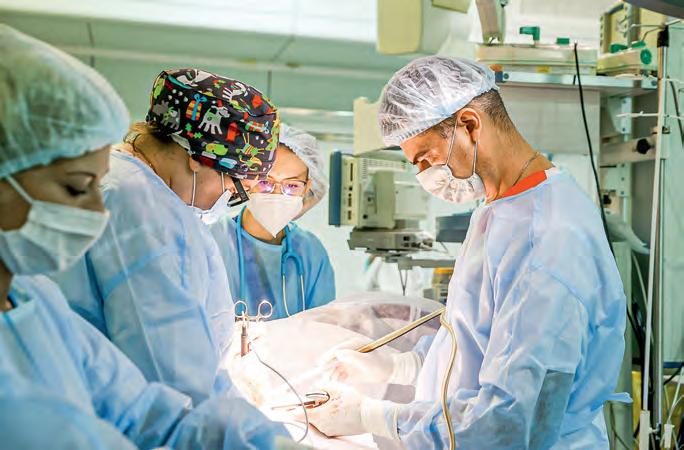
In the surgery room of N.N. alexandrov National Cancer Centre of Belarus
— The causes are the same as strokes. But there are slightly different symptoms, often similar to other pathologies. When a node in the brain begins to die off, it is clearly visible: if the node is responsible for vision, a person starts to go blind, if it is responsible for the sense of smell, the person fails to smell scents. If a large area dies, paralysis begins on the right or left side of the body. The main function of the spinal cord is conduction. It transmits signals from the brain to the periphery and back; it is like a telephone line going to every office and house. And when a stroke occurs (again, it is important whether a large or small area is damaged), a feeling of numbness starts to appear in the lower extremities.
I had a patient who told me that everything was as usual in the morning — she went to work, and in the evening when she was about to leave the office, she didn’t feel her legs. Her spinal cord circulation had already been impaired. She was afraid to drive, she called her husband. She was told at the clinic that there were problems, and some treatment was prescribed. And for two more days she walked feeling weak in the knees. And when she started limping and fell down, she was taken to hospital and she could barely feel her lower extremities. There was no nerve conduction and the nerve cells died. And she had paralysis in her lower limbs. There is no hope that she will recover and be able to walk. The life-story of American actor Christopher Reeve, who played the role of Superman in the eponymous movie, is very illustrative. He fell off a horse and broke his cervical vertebrae, and the body below his neck was paralysed. Although he could afford to spend any money on the best clinics, he didn’t recover. This is a serious pathology. And if it happened, it is important to seek medical help in a timely manner, to diagnose and restore the broken blood circulation. If you have time to do it in the shortest possible time, the prognosis is better. If a lot of time passes and the nervous system is lost, then miracles should not be expected.
— Health care is our strong point. Do Belarusians and foreigners differ greatly in this respect?
— I have the feeling that Americans grow up, get mature and feel young in old age. Grandma can stand near a disco, chew gum, and say: “My boyfriend is coming, we’re going to have fun”. In Germany, for example, a 70–75-year-old man comes to the doctor and talks about selling a house, buying another or changing a car, and he has plans for the next 20 years. In Belarus, when a patient comes for a medical consultation, he or she usually says: “Doctor, do you know how old I am?” And they can be just a little over 60. But they have shut the door on their lives and dont want anything.
Another difference: what the doctor says to a European is the law. If the doctor says that something mustn’t be done, the patient will never do it. Belarusians often have this attitude: well, the doctor advised something but whether the patient will follow it is a big question. And the doctor knows that there is a 50–50 or even a 30–70 chance that the medical advice will be followed. A visit to a doctor is more for psychological comfort. Patients do not always follow medical advice, even if they need serious treatment. But there is, of course, a category of people who turn to doctors for advice and follow it, but there are not many of them.
— What is the danger of such an attitude?
— On a global scale, men and women should be treated separately. Obviously, women have more responsibility. Because the role of a man in conceiving is easier than that of a woman. The ovum in a woman’s body is not restored, not “repaired”, not purified. A girl is born with its set, and a carefree attitude towards herself in her youth affects not only her health but also the next generation. In men, everything is different: sperm lives for a maximum of two months. Even if a boy used to take drugs or alcohol, or used to work in harmful conditions, but he leads a healthy life for a while, there will be no great harm to the child’s future.

Movement is health
Actually, the more irresponsible people treat themselves, the sooner they will get the diseases, which they would have developed being over 60. This affects both the country’s economy (as the state pays disability benefits and provides hospital treatment) and the lives of people. If people become disabled, their adult children or relatives will have to take care of them, not of their own families. A trivial example: “Dad, don’t work upside down in the garden, you have high blood pressure. How much does a bucket of tomatoes cost? You can buy it”. Dad turns deaf ear; as a result, a brain vessel is ruptured, a stroke occurs and half the body is paralysed. And he can’t walk, eat or wash on his own, which is a problem for the whole family. So everyone today has to keep fit and lead a regular life.
— How great is the role of heredity in the development of brain cancer?
— There is heredity in any disease, for example vision, hair loss. Cancer is a worldwide problem, and its number is growing everywhere. Reasons range from the air we breathe, the food we eat, to our bad habits. There is no universal prescription. Everyone has to take care of themselves, keep in mind what foods and bad habits increase the risk of tumours.
— How unfavourable is the prognosis for brain tumours?
— Everything is very individual. The operation itself can be quite ordinary, but very “erratic” bodies can develop such complications that after-effects will be much worse than the tumour itself. And it happens that after having a giant tumour removed, a person lives for a long time and has no major complications. That’s why we tell our students: you treat the patient, not the disease. Disease is what is described in books, and the patient is an individual, and his or her body does not like something, reacts to something. And the difference between a good doctor and not a good doctor is that they have to identify individual characteristics and choose the most appropriate treatment.
In general, the more complicated the stage of innovation is, the harder it is to cope with. Not just a tumour, but any disease — the more neglected it is, the harder it is to treat. There is an aggressive cancer, when the tumour grows quickly and it is less dangerous. But that’s the doctor’s problem: to think about what to do with the tumour. And it is wrong to tell the patient that “you have the most complicated tumour”. Although there are countries where the doctor tells the patient that he or she has a bad tumour, and they have, say, a year and a half left to live. It is believed that people should plan their life, perhaps write a will, have time to do something else. In the post-Soviet space, it is believed that such news can provoke a patient’s global depression, they may even decide to commit suicide. Therefore, this is reported to close relatives. And they have to help with planning future life.
— Brain cancer — is it elderly people’s disease?
— It is impossible to determine age here. In my opinion, it is a problem, including the immune system, which plays a major role in malignant diseases. Atypical cells are constantly forming in every person. And the task of our immune system is not only to destroy viruses and bacteria, but also to find these “defective” cells, identify them and destroy them. What is the specific feature of atypical cells? For example, renal cells can only live in the kidneys, while heart cells can only live in the heart. And atypical cells, no matter
what they are made of, can live anywhere in our body. And we call them metastases. And if such a cell disappears from our immune system, ten of them will establish themselves and multiply. Then other atypical cells separate from there and establish themselves elsewhere, and as a result they destroy the body. Maintaining the immune system in good condition is therefore the very first prevention and resistance to cancer cells.
If your grandfather is 80 years old but has an active lifestyle, runs a garden, rides a horse or bicycle, he is not at risk of cancer even at 80. If a person works in the office, has daily stress, ARVI and herpes twice a month and instead of taking vitamins, having fresches, walking in the fresh air in the park, swimming in the pool or going to the gym, they smoke, drink, it’s quite natural that they can ruin their health even in their twenties. In Slavic peoples, lifestyle is very much connected with alcohol consumption. Weddings, funerals — there is always alcohol, a new has been bought — we must have a drink. Excessive use of alcohol is harmful to the body. But people convince themselves and believe that nothing bad will happen. Alcohol affects the liver, stomach and nervous system. In medicine, they say it is not alcohol intoxication, but alcohol poisoning. It is poison that causes certain sensations in our body that we like. Although, of course, not only Slavs drink vodka, in Mexico there is corn, in China there is rice…
— Is it better to give up alcohol or can we have a glass or two from time to time?
— Of course, there is no need to forbid a person all pleasures at all. But there are things that kill them. And there are people with disabilities. And it will be a slow, long death that can last for years. Because of that, people suffer and so do the ones who take care of them. Believe me, in such a physical state a person will regret a thousand times the pleasure he or she used to receive from excessive consumption of alcohol and cigarettes. Therefore, moderation should be in all things, and one doesn’t need medical education to understand it. By Elena Kravets
steam is not afraid of moroz
People from many countries of the world come to the Belarusian bath attendant for health
dDifferent people have opposite at- do you need them and why did you come titudes to steam bathing. There are fans up with the idea of holding them? of “light steam” who are convinced that — I was not a pioneer here. The Proa steam room and broom will be useful fessional Bathing Championships are held at any age and in any state of health. But in different countries. I tried to inject a many people dislike steam bathing and fresh jet into this movement and hold a never take it. We’ll talk about a classic national championship. I wanted to show steam bath and whether it really brings that the Belarusian traditional steam bath health and longevity? is no less interesting than, for example, the
An expert on this issue is Gennady well-known Russian one. Unfortunately,
Moroz, the founder of annual national many of our national steam-bathing trachampionships and festivals on taking a ditions need to be revived today; we also steam bath in our country, a judge of the have few professional bath attendants. international category on sports steam That is why in 2017 I decided that our bathing, and a member of the Interna- championships would be amateur, folk tional Bath Art Association. and not professional. People liked the — Gennady, let’s start with what idea, three national championships have steaming championships are like. Why already been held in Belarus. Moreover,

amateur competitions are now held in Russia and Lithuania. During such events it is possible to hold master classes for people interested in the traditional steam-bathing, to talk about the features of steam-bathing that enable it to become a way of recovery, and about the mistakes that are harmful to health, so that people would not come to the bathhouse to drink alcohol or play cards, but to steam. I am a good steam-room attendant.
— Do your championships attract many spectators?
— Yes, and every year there are more and more of them. When participants defend their technique of steaming before a jury, it’s really interesting — even for those who have never been interested in steambathing before. We, the organizers, are trying to make sure that our championships are bright, interesting and fun. After all, going to a steam bath is not the same as taking a usual bath. It is a kind of lifeaffirming holiday that gives a boost of optimism and positivity. For example, a few years ago we held the “Open Window of a Women’s Steam Bath” campaign in the Sports Palace. My students steamed out everyone — those in their late teens and in their forties. Of course, they were wearing swimming costumes, but all the other laws of proper steam bathing were respected, and the audience could see beauty and rejuvenating effects of the steam bath. And this year, on the eve of March 8, Belarus hosted the International Women’s Steam Bath Competition — a meeting of fans of western non-contact towel wiping (aufgus) and traditional broom steaming.
traditions and modernity
— What is a traditional Belarusian steam bath like?
— It is not very hot (about 60°C) and a reasonable ratio of temperature and humidity. In this, by the way, our steam bath resembles a traditional sauna, which even today can be found in rural areas in Finland. Hot stones, brooms and firewood are also used. By the way, our contemporaries’ favourite dry sauna with very high temperatures has nothing to do with the true tradition of sauna, or its perfection. It only
“If you go to a steam bath — you rejuvenate yourself”
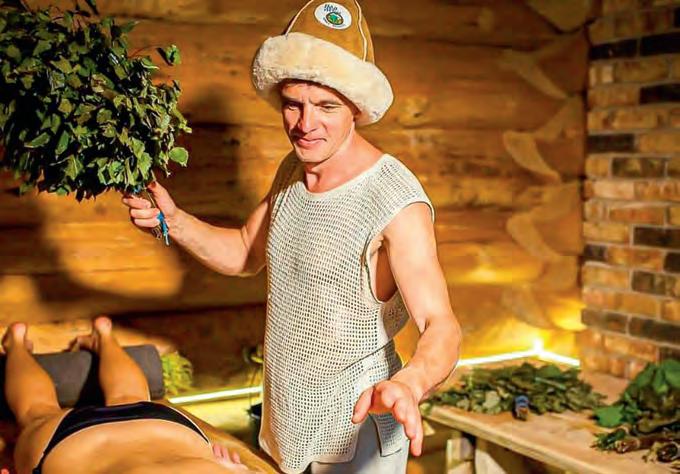
appeared in the 20th century, when electric heaters were invented. Dry hot air (in modern saunas the temperature rises to 120°C) is stress for the body. I am a fan of a classic Belarusian sauna, the basic rule of which is that the sum of temperature and humidity should not exceed 120. If the temperature in a steam room is, say, 55°C, then the humidity should be 65%. The Belarusian Bathhouse has authentic, ancient features, which are, probably, older than a thousand years. These are, for example, mostly birch brooms. By comparison, Ukrainians prefer oak brooms: their technique is historically based on striking, and we use massage movements more when steaming.
— Do you only study and preserve the ancient traditions of steam-bathing, or is the Belarusian steam-bathing still developing today?
— Well, of course it is, because it is not a museum exhibit, but a living phenomenon. We, professional steam bath attendants, exchange our opinions all the time. Some of the Belarusian steam bathing traditions, for example, have taken root in Tatarstan, and I have borrowed some traits from Russian masters of steam bathing. Well, we ourselves are constantly developing something new. For example, we use stone therapy for injuries, as well as various massage techniques. In particular, the massage is made with hot linen bags, which are filled with medicinal herbs depending on the season and the needs of the guest. This is the “our SPA style”.
— Tell us about your author’s programme “Steam by Moroz” — do you have any fans?
— The essence of my method is contrast: the more the body heats up, the more it needs to be cooled. Steam and high temperatures cause 30% more blood to enter the capillaries than usual, a person sweats and toxins are removed from the body. Sharp cooling causes pressure of the capillaries, the vascular system removes cholesterol plaques and a powerful cleansing effect is achieved. Another feature is a large amount of water per person (50 litres or more per programme): the water washes away both physical illnesses and psychological problems. My programme has enough fans in different countries. There are clients from the USA, Australia, Cuba and European countries. I want the Belarusian Steam Bath to become a brand. It deserves it — and this is not just my opinion. At international championships, I often learn from the speeches of many participants about my broom technology and our national breakthrough technologies, which I have demonstrated before. But foreign customers do not go to a steam bath in general, but to a specific master with a reputation. I would like to see
a lot of masters in Belarus, this will allow our tradition to create its own image — as, for example, Japanese Ofuro bath or Turkish hammam.
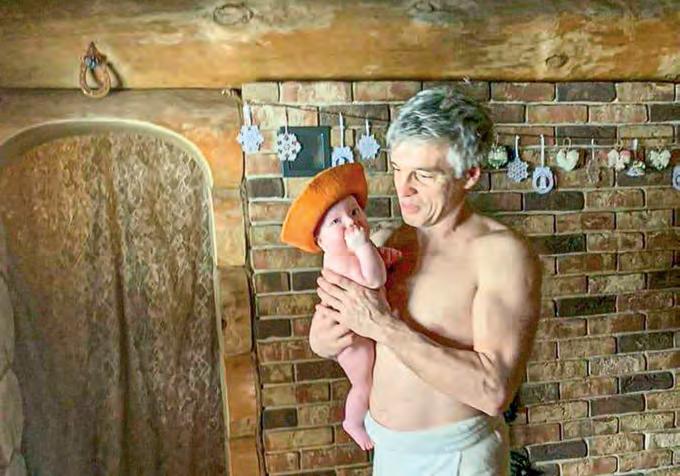
individual approach
— If steam-bathing is so useful, why does it have convinced opponents? In addition, a steam bath has many contraindications…
— Indeed, many citizens have a negative experience of visiting a steam bath. Unprofessional bath attendants caused negative emotions, and now it is almost impossible to convince them. And this is very sad. Well, there are only a few contraindications in the Belarusian steam bathing with a professional attendant: the first three months of pregnancy, skin diseases, chronic diseases in the period of recurrence, acute inflammatory diseases (with “covid” it is not allowed to go to the bathhouse!), cancer diseases. But I must emphasize: you must walk with a professional steam bath attendant. A professional is someone who knows how to steam out a guest at the definite time, taking into account their physical and psychological condition, health and mood. In a bathhouse, as nowhere else, an individual approach is important.
age for a steam bath is no barrier!
— How do people become professional bath attendants?
— It is a long way to go. To become a professional, I studied with masters in Russia, Ukraine and the Baltic States, and gradually collected knowledge about our national steam bathing throughout Belarus. A professional has to be trained in bath schools which give good knowledge — they are in Ukraine, St. Petersburg, Kazan, in the Urals. There is my school in Minsk. A professional must have dozens of steam bathing techniques and be able to use them so as not to hurt a guest when visiting a steam room. When a bath attendant is viewed as a doctor — with the same confidence on the part of the guest and with the same degree of responsibility on the part of a professional bath attendant — steam bathing is only for the benefit of the visitor. Among my guests there were heavily pregnant women. And one of my colleagues started steaming his son when he was not even two weeks old.
to a bathhouse for youthfulness
— Let’s talk about a beauty-effect of a classic steam bath: does it exist?
— I am convinced that a domestic steam bath is better for preserving the youth and beauty of our women than a foreign SPA, because it is designed for the climatic conditions in which we live. The cleansing effect is provided by, for example, a bast wisp that our ancestors used for centuries. And I would advise against using synthetic flannels and shower gels in steambaths. Grasses wash well, it’s natural and good for skin. A steam bath is also aromatherapy (of course, if you use the right brooms). I collect lime flowers. A juniper broom is especially good in winter. Well, birch brooms are best made when young leaves appear. This is an effective means of fighting skin inflammation plus a powerful vitamin charge.
— Spa is associated with wraps — is it possible to do it in a steam room?
— At high temperatures there is no need for additional insulation, you can simply apply masks to the body and get the same effect. For example, a very effective blue clay mask. This clay is available not only in the East, but also in Belarus, in the Mogilev Region. The anti-cellulite honey massage has a wonderful effect. The antiage effect is achieved through a combination of heat and cold: it has been one of the principles of beauty since ancient times. If you go to the right steam room every 10 days, your skin will start to look 7–8 years younger, wrinkles will be smoothed out, and your face will lift up. But I would not advise to expect a weight loss effect after visiting a steam bath. Of course, if you don’t make up for the fluid loss in the steam room, you can lose more than 1.5 kg in 60 minutes. But this is achieved through dehydration, which means that it is useless and short-lived. The sauna helps you lose weight, but not directly: it speeds up your metabolism, normalizes your lipid metabolism and maintains your immunity.
— It is believed that a sauna is a good way to cope with stress. Is it?
— “Bull’s-eye”! Moreover, steam bathing has the effect of rebirth: it calms nerves and organizes thoughts. The right steam bathing “washes away” negativity, aggression, dissatisfaction with life. All that remains is a positive attitude and a feeling of being filled with new energy. By Alexandra Antselevich
in the Rhythm oF pilates
How not to rupture oneself while strengthening one’s health? We are looking for the answer on… the bed, but an unusual one
iIt seems to me that the popular saying Minsk City Executive Committee. And with one’s own weight, maintaining “beauty requires sacrifice” is gradually how many private clubs are there? Each balance and alternately straining some losing its relevance. The topic of health, district has some. One can easily become muscles and relaxing others. Well, now, with all its implications, is now coming to enmeshed in this variety. That’s why I don’t during global hypodynamics, Pilates’ the fore. It’s when beautiful looks are first think you should follow advertising that system, supplemented with dozens of new and foremost a sign of a good body state, promotes new trends or promises quick exercises, becomes particularly popular, well-coordinated work of all its internal results. Well, it’s true that musclemen and correcting anatomical and physiological systems, and the right way of life. But musclewomen in the gym are not always deviations. Today, in equipped gyms one there is a turd in the punchbowl. It would as strong and healthy as they look at first can see exercise machines stuffed with seem that there is nothing bad about sight. Secondly, it would be good to find a all sorts of gimmicks, which nevertheless lifting weights in the gym or doing yoga at guide to the world of wellness and to start resemble the very first beds. Although home. Or, for example, standing at a ballet this difficult path with them step by step. there is also a “cadillac”, a “barrel” and bar and rotating the rond de jamb parter, My coacher Tatyana became such a guide: many other interesting tools for working which makes the feet turn outwards and she helped me do exercises on a special with your body. the posture flexible? But it turns out that exercise machine -reformer. it is possible to do abs exercises incorrectly concentration at maximum and thus block the hollow vein in the Step into history abdomen. The result is at least a bad feeling When I came to the first lesson, and at most a medical diagnosis. And Not all of us know what reformers Tatyana immediately led me to a “chair”: dancers often pay for their air jumping are. It is special equipment that Joseph with problems in the hip joints… Even the usual jogging in trainers can hurt the body Pilates invented 100 years ago. The one whose name is given to the now well- Comments more than “endless rest” on the sofa. Have you decided to swim in the pool? Take care not to get a spinal disc herniation! known exercise system. Its essence is in dynamic, but not strenuous physical activity performed at a slow pace. In this state, Sergey Pustyulga, healthy lifestyle consultant, fitness training specialist: “What to do?” — maybe you are in one can activate deep muscles that people Pilates gives working load to the confusion now, just like I was when I do not use in everyday life, or do it very muscular, nervous and respiratory turned to a healthy lifestyle. It’s impos- rarely. For example, when sneezing. But systems, has a positive effect on the sible to do no sports. Not least because how often do we do this? work of internal organs and energy of the “herd reflex”: it seems that today During the 1st World War, athlete exchange, allows effective weight every Belarusian is doing some sports Joseph Pilates invented over 50 different regulation, improves posture, allows somewhere. And it is clear why: a “menu” exercises. Thanks to his know-how, economical management of movements in the capital’s sports complexes is very he helped many people with serious in everyday life …For those who prefer attractive: stretching, yoga, trx-loops, injuries, wounds and illnesses get back other types of activity (athletics, running, fitness aerobics, tabatа, squash… In total, to normal life. At first, the role of special playing, swimming), this direction there are 37 state sports and physical simulators was played by ordinary beds allows correcting posture defects, culture facilities in Minsk alone, where to which springs, belts, rope loops were disharmonious development of muscle training in 25 sports is available, according attached… With their help, it was possible groups, improves movement control and to information on the website of the Main to adjust the amplitude and intensity of acts as a means of recreation. Department of Sports and Tourism of the exercises. The work-out was performed
this exerciser really looks like a chair — a stationary platform with a seat. But it has a step on which I had to put down my foot so that my big toe remained intact, that is, it protruded forward and my foot stood perpendicular to the step. I had to find a hole under my knee, which I had to press to the seat, and also turn around so that my thighs were parallel to each other. To stretch my arms forward and only then slowly press the step with my foot. Do you think I, a former gymnast, did it right away?! I don’t know how many minutes we spent for preparation, but at some point I even got upset because my turn-out feet didn’t want to stand “according to the nature”, i.e. straight. My thighs moved either to the right or to the left. Soon I forgot about the arms that had to be stretched forward in a certain position. And to keep everything under control! Yes, it’s not “multitasking” at usual work, it’s much harder!
Somehow Tatyana and I coped with my stubborn (who would have thought! I did yoga!) body and started moving my feet. One, two, three — my buttocks were burning, although I was standing almost motionless, controlling all my muscles with great effort. And Tatiana was watching not only the correctness of my movements, but also my breathing. A breath in — a
Elena Likhtarovich, rehabilitation therapist:
With age, all people’s muscles and tendons become less elastic and exercise on the reformer is the safest way for them to return to their former state as there is no weight load. The joints are prone to abrasion and limited mobility within the radius. Reformer exercises allow you to humanely develop joint mobility and gently open the articular bag so that the joint surface is washed with joint fluid as if it were lubricated and moistened. In addition, you can feel the state of your muscles and tendons while sitting or lying, when you do not need to keep your body in a vertical position and compensate for any twists in your body that appear with age. movement to myself, a breath out — from myself. “Well, how is our muscle between our ribs?” — Tatyana draws my attention to the sensations in my stomach when I lie on the “cadillac”, working with the inner surface of my thighs. “I make sure that my feet are joined all the time, — I answer, breathing out.— But I feel nothing between my ribs…”, — “If you don’t feel it, it means we’re doing something wrong. Let’s try it in a different way”. Tatyana follows me. Like a elastic cobra, she crawls underneath me, making sure that each vertebrae gets its own load, stretches, but does not overstretch.
Having worked with the “articulation of the spine” (I’ve learned new words!), we proceed to twisting around the shoulder joint. It sounds terrible, but in practice I get interesting sensations when I need to press my left ribs, make loose my right ribs, turn my arm and not to forget about breathing in and out. I looked in a big mirror — I look good! I look like a sign of infinity.
three in one
After the first training, I was afraid that I wouldn’t get up from the “magic bed”, which trained all my muscles, even the ones I didn’t know about, as well as my joints and tendons (and that’s the main difference between the reformers and standard exercise machines). However, my legs ran cheerfully up the stairs in unison with my good mood. The feeling in my body was amazing! It was as if I had taken a steam bath, swam in a pool, and then was massaged full-heartedly. Three in one! And I can breathe freely! At the time of the coronavirus, it feels particularly good.
Yes, I have seen from my own experience that training on the reformer, and not just on it, has a beneficial effect for the whole body, it even relieves pain and corrects posture. They say that the quality of sleep gets better. I was also promised a new manner of walking with time… I wonder what it will look like? We’ll see. By Alisa Gungor. Photo by Author.
twisting around the shoulder joint
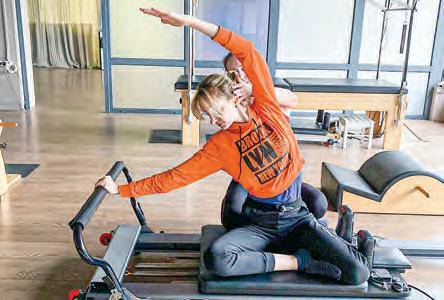
on reformer
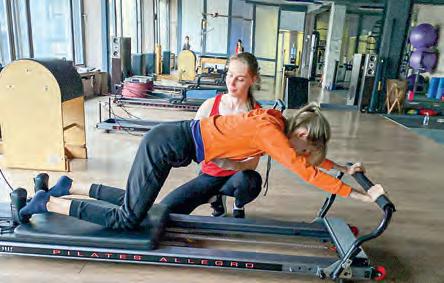
“Barrel” training simulator
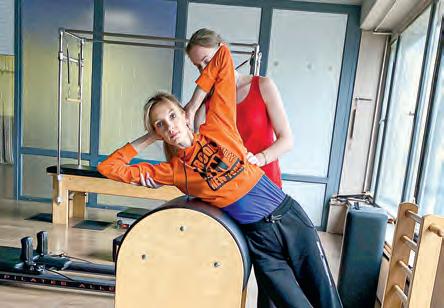
“Candlestick” on “cadillac”

Vladimir KorotKeVich and the whole world
how well-known is Vladimir Korotkevich in the world? we are looking for the answer to this question together with alexander Susha, deputy director of the national library of Belarus, cultural anthropologist, bibliographer, publicist, researcher of Belarusian books and Belarusian literature.
Vladimir Semyonovich Korotkevich (1930–1984), a classic of Belarusian national literature, poet, prose writer, playwright, scriptwriter, publicist, translator, left us more than thirty six years ago. During this time, a collection of his works in 8 volumes has been published. Some time after publication, an additional volume appeared. Thanks to the efforts of the publishing house “Mastatskaya Litaratura” and the famous literary critic Anatoly Voroby, a Collection of classic works in 25 volumes is being published. Decades after the writer’s death, dozens of individual editions of his works have been published. In the last decade
alexander Susha, deputy director of the National library of Belarus
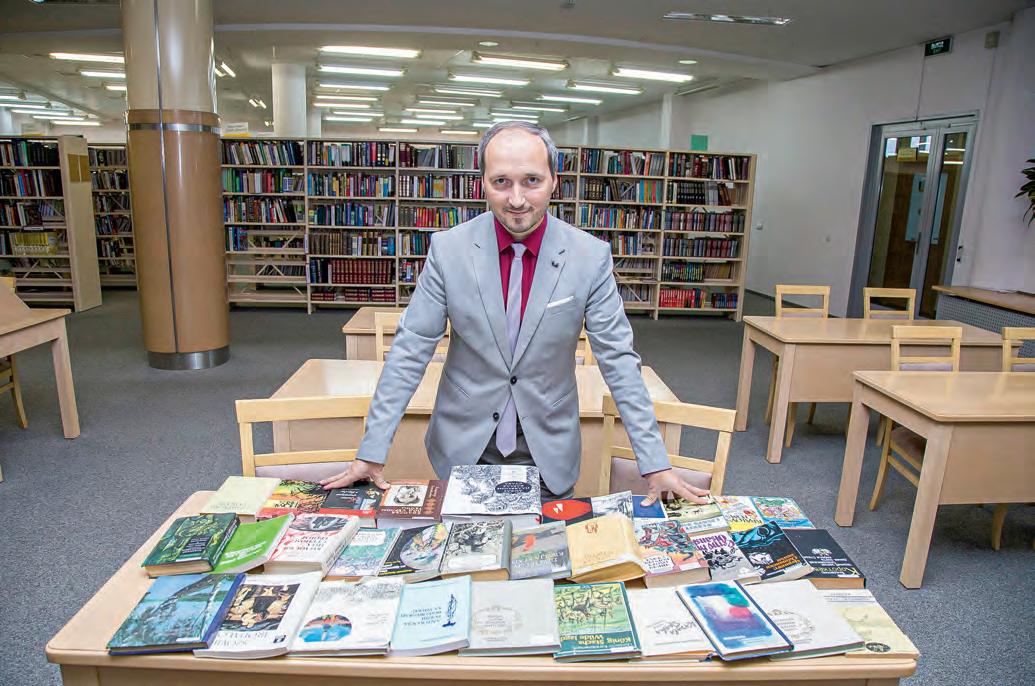
alone — almost fifty …How well is our classic known in the world? We answer this question together with Alexander.
— Is it possible to see in Minsk Vladimir Korotkevich’s space represented in other countries? I mean, to what extent does the National Library of Belarus take into account translations of authors’ works “Ears of Rye under Thy Sickle” into other languages?
— The question is both simple and very complicated. On the one hand, it would be possible to answer positively without much reasoning. We know very well that Vladimir Korotkevich’s works have been translated into many world languages: Bulgarian, English, Czech, English, Estonian, French, Chuvash, Georgian, Hungarian, Latvian, Lithuanian, Moldovan, German, Mongolian, Polish, Russian, Slovak, Tajik, Uzbek, Ukrainian, Vietnamese and others.
All these translations and their publications, although prepared for foreign readers, are of great interest to Belarus as our national documents. Therefore, our National Library strives to monitor their appearance and makes every effort to ensure that these publications are included in its collection. For this purpose, we use a variety of means: we buy them, we receive them as a gift, we exchange books with foreign colleagues on the terms of international document exchange. Not only libraries abroad, but also representatives of the Belarusian diaspora, foreign Belarusian scientists (I would like to highlight the role of the International Association of Belarusianists), as well as publishers, translators, literary critics, institutions, diplomatic missions of our country abroad and other interested parties often provide assistance in this matter. Of course, it is beneficial to use foreign bibliographic databases, electronic catalogues of different countries and individual institutions. And it pays off. Yes, a quick search in our electronic catalogue allows us to make sure that the collections of the National Library of Belarus have translations of works by Vladimir Korotkevich into many languages. On the other hand, it should be noted that today the “space of Vladimir Korotkevich in other countries” is seen differently. To some extent, there is a feeling that the interest in Vladimir Korotkevich’s legacy on the part of foreign translators and publishers has somewhat faded. For example, in some languages his works have not been published for several decades. Why this happens and what can be done, how to change the situation — we can talk and think about it in more detail.
— In your experienced bibliographic opinion, is Vladimir Korotkevich of most interest to the Slavic reader?
— Yes, and naturally national literature is most famous and interesting for our neighbours, because they are mostly Slavs. It is translated into Eastern, Western and South Slavonic languages. More often the translations are made by native speakers,
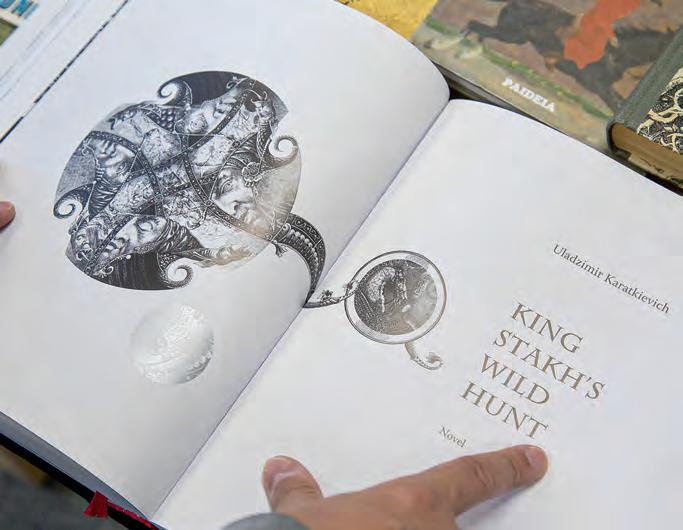
writers or translators from these countries. In particular, the works of Korotkevich were published in Bulgarian translations by Christ Berberov (1968), Georgy Valchev (1971), Simeon Vladimirov (1977, 1982), Rumyan Evtimov (1978, 1981), Penka Kynev (1983), Andrey Germanov (2000), Naiden Valchev (2000) and others. Elena Lukyanchuk and Karpo Skrypchenko (1972, 1982) worked with Ukrainianlanguage publications. It so happened that Korotkevich’s works were repeatedly published and republished in various author’s translations. For example, in Polish they were translated by Yan Gushcha with a desirable frequency: in 1971, 1974 and 1976.
However, sometimes these translations were made by Belarusians who are fluent in one or another Slavic language. For example, the famous translations of Vladimir Korotkevic’s poetry into Serbian by the literary critic, serbist Ivan Charot, who is so highly regarded in Serbia that he was awarded the title of Academician of the Serbian Academy of Sciences. Still, we must admit that the largest number of translations were published in Russia and were intended for Russian readers.
— By the way, do you think there are enough translations of Vladimir Semy-
onovich’s prose and poetry into Russian?
— Famous works that were published as a separate edition, as well as works in collections and magazines have been translated into Russian. Among them are the stories “King Stakh’s Wild Hunt”, “The Grey Legend”, “The Boat of Despair”; novels “Ears of Rye under Thy Sickle”, “Black Castle Olshansky”, “Christ Landed in Grodno”; a poem in prose “Chosenia” and many others. It would seem that there are many. Some works have been translated
more than once. However, first of all, we must admit that some of these translations were made not for the Russian book market, but for the domestic market: unfortunately, many Belarusians prefer to read classic works of Belarusian literature in translation rather than in the original language. Secondly, the availability of translations into Russian does not mean they are widely available and popular. Yes, most of them were published in the past decades and today are not widely available in bookstores. Especially when it comes to a Russian buyer of a book. It is true that the circulation of recent editions was not too large for the Russian reader to notice. But it’s not the most important thing. Today, as it seems to me, the time has passed when the main means of creating demand was to provide supply. I mean, it is not so much the reprinting of a writer’s works that arouses interest in his work, but the opposite: the growing interest in his work should encourage publishers to publish the next edition of his works. And in this sense, it would be right to talk about the targeted activities of the state and public institutions to promote national literature. We need a specific programme, a national programme in this direction.
— Don’t you think that the scope of vision of Vladimir Korotkevich is not fully
understood in Russia and even in Ukraine due to the lack of good translations?
— Yes, in part it is true. However, I have to go back to my previous discussions about supply and demand. If there were a significant demand for translation of Vladimir Korotkevich’s works in the Russian language environment, there would be translation orders on a competitive basis, as well as targeted appeals to wellknown and talented translators. After all, the translators themselves would be fighting for the right to work with popular text. This is what translators around the world are working on to improve translation quality. The situation can be improved. For example, many countries have book institutes (under different names) supervised by the government or as independent institutions that systematically study the demand for national literature, develop strategies for its promotion and support, and make recommendations for information market players. And they work on a scientific basis, analyze world and national statistics, organize problem round tables, invite well-known experts and so on. They also organize or coordinate presentations and research activities abroad to promote the literature of their countries or the work of certain national authors. In many places, funds and grants exist to support and promote national literature abroad. For example, they receive and redistribute funding for the translation of Belarusian writers’ works into foreign languages, organize translation competitions and presentations abroad, negotiate the purchase of these books with foreign cultural institutions, present national literature at international book and literature forums and fairs, promote
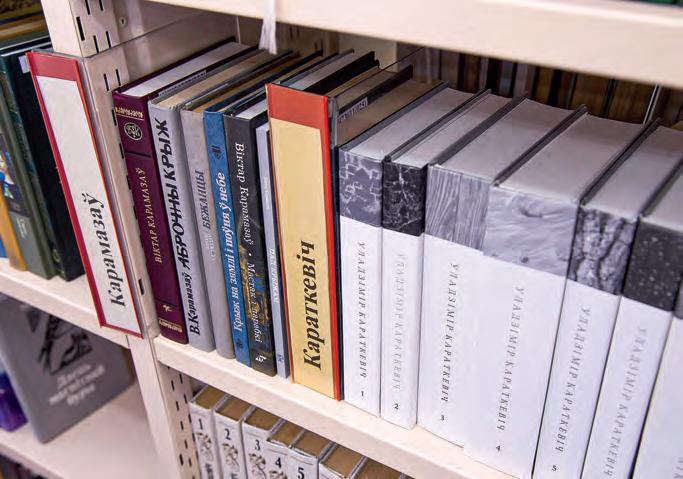

and encourage the writers who sell license rights to translate and publish their works abroad. And this is just one example of how national literature is popularized among foreign audiences. Look at how much Germany is doing to promote its literature, for example, Goethe’s works or Italy for the works by Dante, Poland promotes Adam Mickiewicz (native of Belarus), Ukraine does the same for Taras Shevchenko… Russia is not even worth talking about, because it managed to create a powerful programme to popularize Russian literature and its representatives
abroad. And this programme is widely promoted in Europe and Asia. Needless to say that until recently, there were fewer monuments to Belarusian writers in Belarus than to Russian ones, when fewer streets, avenues, libraries, etc. were named after Belarusian artists than after the names of authors of the large and brotherly but neighboring country. The number of monuments to Pushkin alone exceeds the number of monuments to any national writer. This is impossible for any other country. And how many monuments do we have to Vladimir Korotkevich? I think that most Belarusians do to have from foreigners? If we ourselves do not have enough respect for national literature and do not care enough about its popularization, what moral right do we have to complain about its ignorance by peoples of other countries?
— What would you recommend to Belarusian book publishers?
— To publish more often the works by Korotkevich in Belarusian, Russian, Chinese, and in general in Asian and African languages… It’s necessary to understand that translations do not interfere with each other and are not competitors. On the contrary, the appearance of new translations and publications of the writer’s works in different languages only increases interest in his heritage. I understand that this is a financial issue: on what kind of publication and in what language to spend public funds and support. I sincerely believe that efforts should be made not to produce new translations but to promote them, to create demand for them. And in this programme, translation support is just one of several elements. At the same time, when it comes to choosing between Belarusian and Russian, my opinion if the following. I am sure that the domestic Belarusian market must necessarily support the publication of works by Vladimir Korotkevich in the Belarusian language. Our compatriots should have the first opportunity to read his works in their original language. As for the translation of the writer’s works into foreign languages, in my opinion, the best thing would be not to translate them in Belarus, but to create favourable conditions for translation in other countries (in Russia). As a result, not only new translations will appear abroad, but also the scientific and social sphere, where they will be in demand. I mean, there will be scientists and translators who will work with the original text and recreate it. They will be interested in presenting and promoting the results of their work. A public discussion will begin, and their names will enter the information space of foreign countries. And only this will ensure that the local audience is ready to accept the new translation.
— “Ears of Rye under Thy Sickle” is a rather complex work, it has several layers, a real depth that requires knowledge
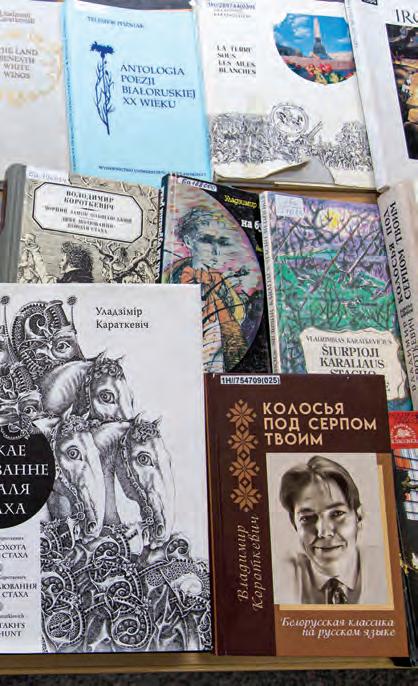

not know it. So what attitude do we want
of Belarusian history and, one might say,
a prepared reader, some historical education. Are you sure that the scope of this novel is fully understandable to readers in Russia, Ukraine or the Baltic States?
— I partially agree with this opinion, but not completely. The work is truly multifaceted, based on rich historical facts. However, from my experience, I can say that it is quite easy to read for people who are unfamiliar with the history of Belarus. After all, we can all read the works by Homer, Shakespeare or Cervantes. So why should we be so afraid that a foreign reader will not be able to understand domestic fiction? Especially when we talk about neighbouring countries. It is known that the events of 1863–1864 uprising described in “Ears
of Rye under Thy Sickle” are very close and well known in neighbouring Lithuania and Poland, but for Russians and Ukrainians they are also quite understandable and often partly known. I think that in this case we should not worry about whether a foreign reader will be able to understand all historical aspects (because Belarusians themselves read works of different profundity, which is also quite normal). Anyway, we do not deal with a scientific work that should be as accurate and clear as possible, but with a work of art. By reading it, each of us creates our own sense and understanding of the events described, and our own images appear. The reader becomes a cocreator of the work (along with the writer), and with each reading something new is born.
— Many of Vladimir Korotkevich’s works were published in Czechoslovakia in Czech and Slovak, in Poland and Bulgaria, but how well is Vladimir Korotkevich known to English-speaking readers? What needs to be done to change the situation?
— Let’s be objective, in the Englishspeaking world Vladimir Korotkevich’s work is little known. It does not mean that there are no translations of the writer’s works into English. There are. Some translations date back to Soviet times. Some of them were published in Moscow. For example, in 1976 the Moscow publishing house “Progress Publishers” published an excellent anthology of modern Belarusian poetry “Fairy land of Byelorussia”, in which we see four works by Vladimir Korotkevich (“The Hare Is Brewing Beer”, “Earthquake”, “Byelorussian Song”, “Sunrise”) translated by Walter May. In 1986, the famous Moscow publishing house “Rainbow” published the book “Home fires: stories by writers from Byelorussia” with translations of works by Belarusian writers, one of whom was Vladimir Korotkevich. Translations of his works were published in Soviet literature (1982 and 1983). Minsk “Yunost” is particularly well known among Belarusian publishing houses. For example, in 1982, a translation of the essay “Land Under White Wings” by Apollon Weise and Walter May appeared. In 1989, the same publishing house published the story “King Stakh’s Wild Hunt”, translated into English by Mary Mintz. This translation was republished several times later. Most translations of Vladimir Korotkevich’s works were published in various collections or in literary and art magazines. For example, as early as 1972, the publishing house “Belarus” prepared a collection of stories by Belarusian authors entitled “Colours of the Native Country”, translated by Apollon Weise. Among other things, we see one of the first translations of works by Vladimir Korotkevich, i.e. the story “The Ark”. Among the latest Englishlanguage editions is an initiative of the Be-
Belta
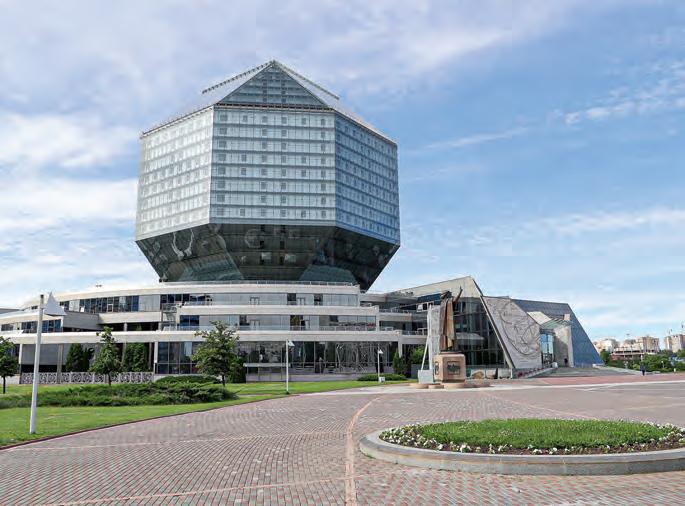
larusian Cultural Foundation dedicated to the 80th birthday anniversary of Vladimir Korotkevich. In 2010, a book by the Belarusian classic “King Stakh’s Wild Hunt” was published in four languages — Belarusian, Russian, Ukrainian and English (the translation by Mary Mintz was used). There were other publications as well. It is gratifying that publishers from Englishspeaking countries were involved in this work. For example, in 2013 the British publishing house “Glagoslav Publications” published a story by Vladimir Korotkevich “King Stakh’s Wild Hunt”. In fact, this is a so-called “non-standard publication” which is common in the foreign world when a book is reprinted at the request of customers and sent to them by mail. And it can be either soft or hardcover, and it can also be sold electronically. Tthis trend can’t help but be encouraging. It should also be noted that some English translations of Vladimir Korotkevich’s works are now available on the world wide web. There are literary sketches of foreign Belarusians devoted to the work of our famous classic writer.
And yet we must admit that in the English-speaking world Vladimir Korotkevich’s work is little known. Presentations and festive events dedicated to the writer’s
jubilees abroad are rare (and those that take place are more focused on the Belarusian diaspora than on the local public); international scientific conferences outside our country are hardly dedicated to him and his legacy; there are no feature or documentary films about his life and work known abroad…
— Do you think that the domestic book sector can revive the practice of the Soviet time, when Belarusian-made books were sold to regions far from Belarus? By the way, both “Mastatskaya Litaratura” and “Yunatstva”, which no longer exist, published books in German,
Spanish, English, French, Arabic and other languages. Why not start this practice by publishing and selling translations of works by Vladimir Korotkevich? Is it realistic?
— I think that this is a somewhat rhetorical question. Naturally, it has to be done. And I could tell a lot about it. But this area of work is familiar to you and our readers, I won’t convince them of the obvious. I will tell you about something else, maybe something less popular and known, something new, which is sometimes difficult for many domestic publishers to decide on. I am not saying that this is true, but I still have some experience
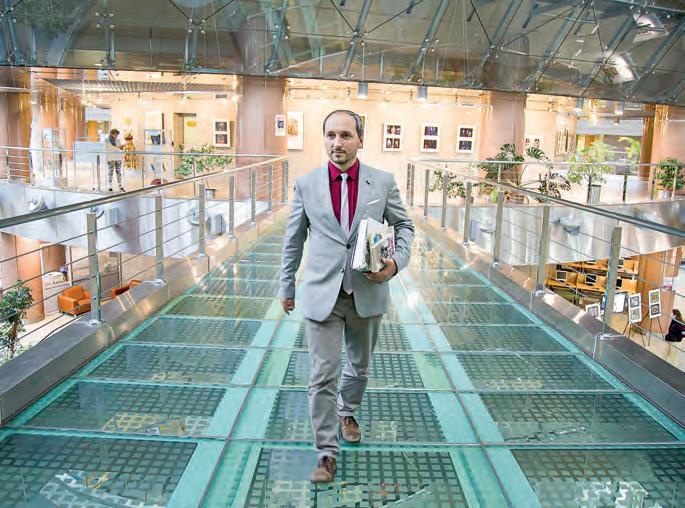
as a publisher, librarian, and researcher. It seems to me that a domestic publisher cannot count on great success in selling published translations of Belarusian writers’ works, for example in Kazakh, Spanish or Japanese. There are many reasons for this: the organization of logistics and delivery of literature to a distant country without guarantees of performance; the need to establish contacts and conclude contracts with foreign booksellers; the need to work in the legal field of a foreign country in compliance with domestic legislation; travel expenses and presentation activities abroad, and many other things. All this can only be afforded by the largest publishing houses in the world, and there are few of them. For others, this is not economically feasible. And it is not relevant for our time. Today, almost no one in the world goes this way. There are two more understandable and effective work formats, which we have not used enough. The first is the sale of electronic versions of publications. This area of sales of literature (especially fiction) today occupies a large share of the world book market and allows us to effectively cross borders and currencies. Unfortunately, Belarus still looks very weak in this field. But if we do not move, but simply deny and close our eyes, then
other, more energetic players will come to this market. To be more convincing, I would like to give the example of my native National Library of Belarus: in recent years the number of virtual visits to our library has been over 75% (three quarters!!!) of the total number of visits. And it is still growing. I think the situation with the global pandemic will only accelerate this process. The second area of work is the sale of license rights to the works of “our” authors. Today the whole world is working on it. It is much more convenient, faster and more profitable, as international practice shows, to sell the right to translate and publish the works of the author promoted in our country to a foreign publishing house, which can sell and present books in its country much better. A domestic publisher from such a transaction may have either a percent of the revenue or the amount fixed by contract. As a result, it becomes even more interested in promoting domestic writers. This is the way the whole world is organized today. For example, the vast majority of transactions at major international book fairs (in Frankfurt, Germany) are for publishers to sell the rights to translate or republish “their” works. And, unfortunately, Belarus is one of the few European countries that has not done it yet. I am sure that it is necessary to rise above the usual practices (not to abandon them) and try a new format of work. In this sense, it seems to me that the work of Vladimir Korotkevich is particularly attractive in terms of marketing. In the world where fantasy, gothic novels, historical detectives, documentary prose, etc. are in great demand, the writer’s creative heritage has the highest chances of commercial and readership success.
— Looking through Korotkevich’s foreign bibliography, will we find literarycritical, historical and literary publications in it?
— Again, the question is somewhat rhetorical. It is known that scientific interest in the work of Vladimir Korotkevich originated in his lifetime. And not only among domestic researchers, but also abroad. Similar research was published in journals and literary collections in various languages. Among them, Russian prevails (I know dozens of such publications), many were published in Polish, Latvian, Bulgarian, French, German, Ukrainian and Lithuanian. Quick search in the electronic catalogue of the National Library of Belarus allows finding about 600 publications dedicated to the work of Korotkevich. However, the vast majority of them are in Belarusian and Russian. And yet I must say that this is inexcusably little. Of course, this is just the beginning. The real discovery of Korotkevich by the world is still biding its time. Interviewed by Kastus Ladutko. Photo by Yan Khvedchin.
no woRds. Just emotions…
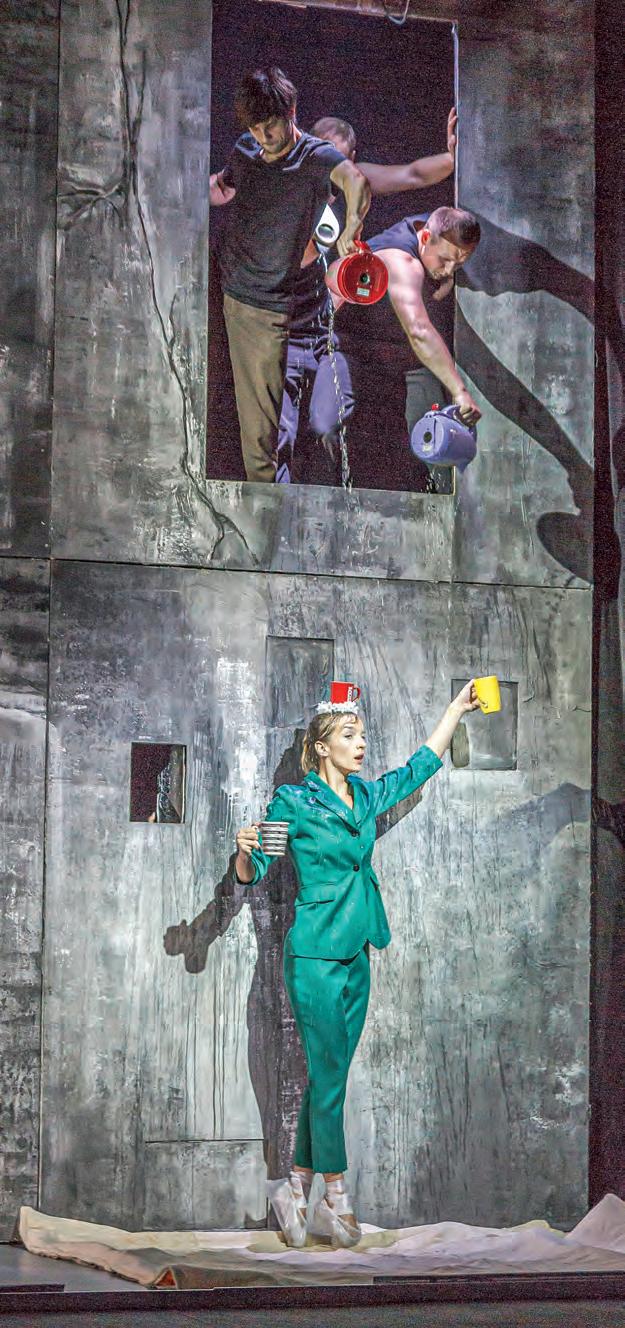
teaRt.By
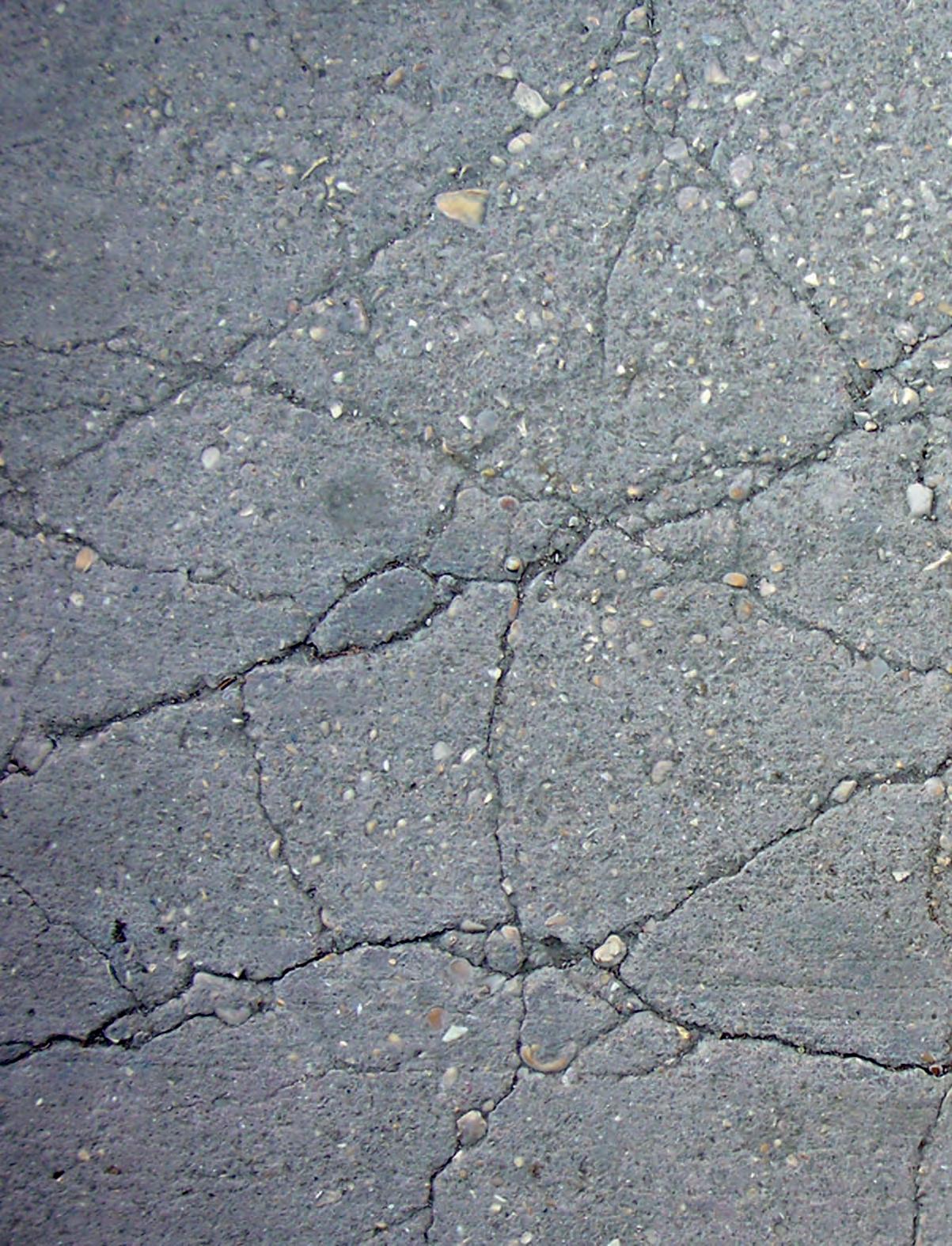
The Republican Theatre of Belarusian Drama is not afraid of experiments: a plastic performance based on the ancient Greek myth about Orpheus and Eurydice appeared in the repertoire poster.
Have you ever dreamt about a narrow, narrow corridor or tunnel, maybe even a gap which you have to get through? If so, you probably remember the sensation of stretching out one arm first, then the other with great emotional tension, trying to stick your head in, and then — you already see a “new world”, but your legs are still pressed under some concrete slab. This is how the mime performance “Concrete” starts, which was staged by Evgeny Kornyag, a well-known Belarusian director, two-time winner of the 5th National Theatre Prize.
In a grey monolithic wall that occupies almost the entire stage, a small rectangular space suddenly appears, from which the light of a fluorescent lamp bursts into the auditorium. It shines very brightly, right into the eyes. This rectangular hole is all filled with actors. They are lying densely on top of each other in a chaotic order, and it is difficult to understand whose hands, feet, hair these are… The space is too small, and we see each of them start moving and trying to “squeeze out” literally by parts. Someone’s knee and arm come out, someone’s bare thighs appear… Erotic?! Not at all! Perhaps, because of a constantly buzzing, like a faulty lamp, loud sound, excessive imagination could not run riot. And it would be inappropriate: all attention was focused on when “concreted” people would finally be able to get out.
And all of a sudden there is silence. Absolute silence. On a semi-dark stage, the actors already stand in a row looking silently into the auditorium. All in black underwear and black protective masks. Everyone but one — Dmitry Davidovich, his face is open. He plays the main role of Orpheus who, according to the famous Greek myth, fell in love with Eurydice, a woman of unearthly beauty. As we know, this love story doesn’t have a happy end: Orpheus’ beloved was bitten by a poisonous snake. He was grieving for a long time, unable to forget her, and even went down to the realm of the dead to take Eurydice out of there. But alas! In the stage narrative of this “visual poetry” — this is the genre of the play — Orpheus eventually rushes down: he jumps off that black rectangle which appeared at the beginning of the performance.
I can’t say that the ancient Greek plot can be easily read in the play. Its visual range from the first mise-en-scene to the last one is staged in a contemporary style: on stage we see half-dressed “in
the latest fashion” characters deprived of any individuality; dreary grey scenery (looks like everyday “office” life in panel-concrete blocks!), the same typical situations when someone dates someone and then somebody else… And among all of them there is a “white crow”, a person “not of this world”, with his own different from others’ ideas about life. Does he belong among the others? The director states that he does not. “Despair rules the world” — such a slogan could be written on the RTBD poster under the title of the performance called “Concrete”.
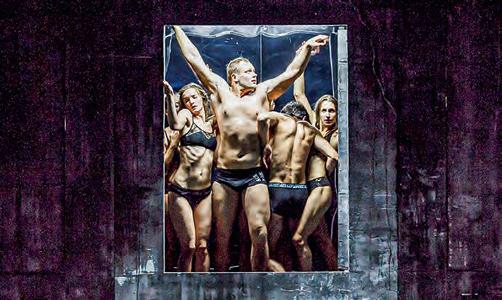
There is a certain zest in a mime performances. One can find many additional meanings in them. And every spectator will have their own meaning. Nevertheless, in my opinion, a plastic performance is a very true and relevant way to address the spectator’s soul spoilt by a visual picture, bypassing the control of his or her mind. It is also combined with the sound range that has a strong influence on emotions (it cannot be called music in its traditional sense), which was created for the performance by the composer Nikita Zolotar. And, of course, the lighting design made a huge impression on me personally. I would even call it an individual participant in the entire performance: it played its special role, focusing the viewer’s attention on nuances. I think this is the creative luck of the artist Tatyana Nersisyan — winner of the National Theatre Prize of Belarus (2012, 2018), winner of the Russian National Theatre Prize “Golden Mask” (2016).
So what is this experimental performance about, which was voted best immediately in the year of its creation — 2017? What was the director’s idea, creating his “Concrete” on the basis of the ancient Greek myth? About love, about the male and female, about loneliness in the crowd, about losses, about despair… Evgeny Kornyag “saturated” the performance with rather depressing moods when “everything is bad and there is no way out”. Discussing it later with the audience, I understood that for some people the action seemed the one that drags, and for others it seemed incomprehensible. There were also those who stood up and left before the performance was over. As for me, everything was as clear and transparent as water, which appeared in one episode or another. I especially remember the scene with the ballerina (played by Grazhina Bykova) in her emerald business suit and white veil. She tried to please the grief-stricken Orpheus, demonstrating her “success”. While performing a cruise in her point shoes, she had to hold a cup to catch a jet of water pouring out of the kettle from above. Then a second cup appeared, and the ballerina had to keep up with two jets of water pouring out of two kettles. And then there was a third cup …Airily jumping from foot to foot, she was spinning, catching the jets which were moving around her, and … she could not keep up, of course. The veil got wet, the business suit started to look dated, and beautifully styled hair covered her face. (It reminded me of many of us — modern superwomen who try to keep up with everything and surprise everyone!) In the end, the ballerina had no longer “looks or greatness”, but she danced her dance to the end, bowed, lighting the hall with her insincere professional smile, sent an air kiss to Orpheus and left the stage with the appearance of the winner, leaving behind wet traces. Cool! I cannot but mention the actress Marina Zdoronkova either. Her appearance does not quite fit the 90–60–90 beauty standard. Nevertheless, the director decided to dress this particular actress in a tight, bright pink frock, and thus created another typical image of a contemporary character. Trying to attract Orpheus’ attention, she showed him a hip sway to her walk. And then, having no response, she went to others, to those who paid for her services. On the second shift, before she had time to take off her “working” pink dress, she started washing the floor. “You have to hustle if you want to survive” could be seen in her behaviour.
I could hardly call the performance an advance in Belarusian theatre art. Before it, on the domestic stage there were groups “talking” to the audience with the help of their bodies. For example, the Belarusian theatre of pantomime “Ruh”, known in due time far outside the USSR. Nevertheless, something has changed
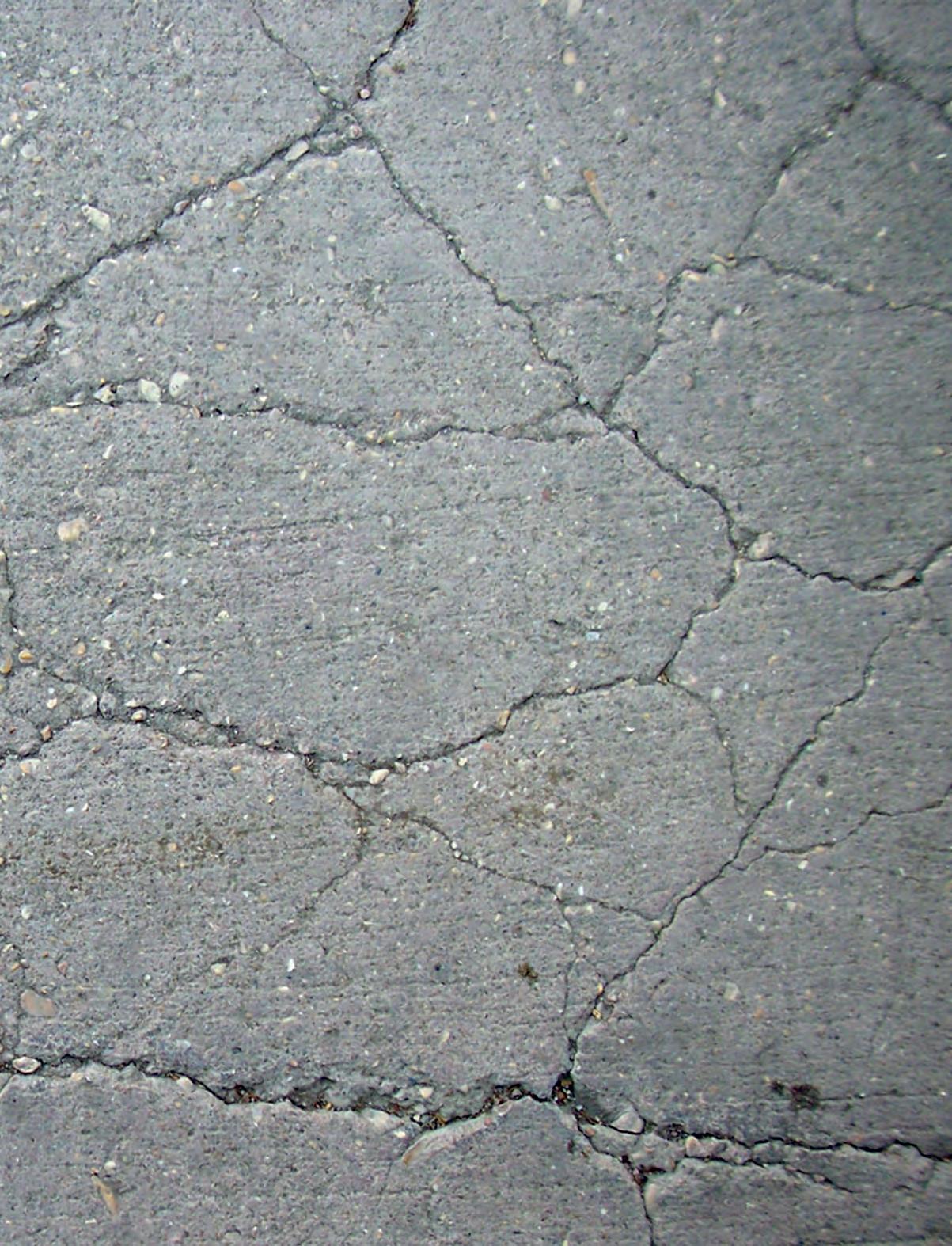
y B t . R tea
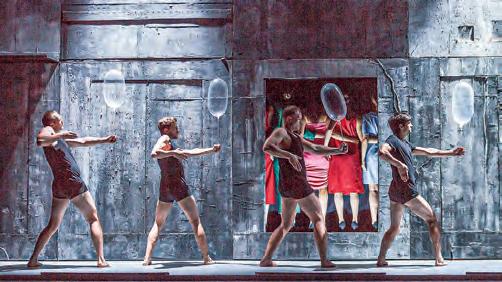
in theatre life with the arrival of the rowdy director, as he is called in our press. And it motivates viewers to think and actors to discover new creative facets in themselves.
And changes are always for the better. And though “Concrete” makes you feel spiritual cold and universal indifference (perhaps, to make us think that “this is not the way to live”), I left the theatre in a good mood. First of all, my aesthetic hunger, linked to the limitations of the pandemic, was completely satisfied. And secondly, I realized that there were fewer and fewer “concrete” problems in my personal life. And this is wonderful! By Alisa Gungor
Modernity baSed on tradition
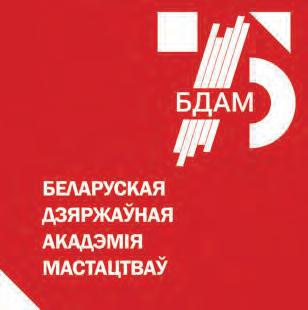
In November, Belarusian State Academy of Arts celebrated its 75th anniversary!
tThere is no doubt that the preservation of traditions, above all rusian creative unions of artists, designers, theatre figures, literary academic artistry, remains a privileged feature of the national art and artistic critics is formed by them. school at the Belarusian State Academy of Arts. At the same time, What can we focus on when speaking about the specifics of however, it seeks to rethink its experience based on the require- the Academy training process? By the way, it should be noted that ments of the new age. recently specialists in a new direction “Monumental and Deco-
Classes at the Belarusian State Theatre Institute, the precursor rative Art (Restoration)” have been trained there. The fact that of the Academy, began on November 12, 1945. This day is consid- graduates of this department become professionals of the highest ered today to be the Day of the Academy. However, the decree on class, has already been confirmed by the quality of their creative the beginning of activity of the future institute, was issued in June work. The students who major in restoration, under the guidance 1945. Its first director was the well-known worker of the Belaru- of Associate Professor Yury Podolin, took part in restoration work sian theatrical art M. Gursky. in the museum and castle complexes in Nesvizh and Mir. During
But let us return to the present day. It should be noted that their internship, these students also implemented a project to creeven a decade of extensive repair works of the main building didn’t ate an iconostasis and paint icons for the church of one of the oldreduce the professional level of the Academy students’ training. est monasteries in Belarus — the Holy Ascension Nunnery (17th Yes, it was a very difficult period. If for no other reason than the century) in the village of Barkolabovo, Bykhov District, Mogilev oldest departments (theatre and art) worked in the historic build- Region. ing, there was a library and the main “engine” of the educational Among the undoubted achievements of muralists are a mosaic institution — its theatre. of the All Saints Church in Minsk, a unique bronze sculpture on
Everything is known to be learned through dialectics. Today the site of the death camp in Trostents. Notable were national and the Academy has a scientific and pedagogical school of art criti- international achievements in easel and book graphics of Pavel Tacism and six creative and pedagogical schools: painting, monu- tarnikov, twice winner of the “Golden Apple” award at the Book mental and decorative art, graphics, sculpture, craftsmanship, Art Biennale in Bratislava, winner of the State Prize. The particigraphic design, font. All of them have developed in the last dec- pation of artists in the 54th Venice Biennale in 2011 identified the ade. The schools demonstrate a high level of training and provide Belarusian State Academy of Arts as the leader of creative and scientific support to the students’ learning process. pedagogical process in the country. As well as its brightest repre-
It is no exaggeration to say that the modern cultural landscape sentatives — masters and teachers of the new generation, who are of the country is largely determined by the work of former gradu- under 40 and they completed their artistic education in Belarus in ates of the Academy. It is not for nothing that the basis of the Bela- the new period of development of the sovereign state. Today they
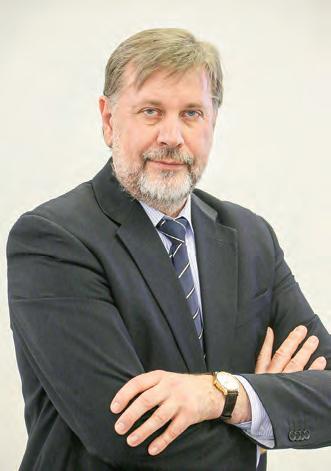
have taken up teaching positions not only at famous works include facade sculptures the Academy, but also at other universities and sculptural entrance composition for and colleges. the Bolshoi Opera and Ballet Theatre of
The success of our designers also sur- Belarus in Minsk by A. Finsky, M. Shkroprise specialists. Graduates of this depart- bot together with G. Buralkin. ment of the BSAA won prestigious interna- The sculptural composition “Ballet” tional competitions and found application by V. Slobodchikov in the park near the of their abilities in creating world brands. Bolshoi Opera and Ballet Theatre was also
Speaking about recognition of merits, highly appreciated and recognized. it is necessary to note that Special Prizes Notable phenomena were the monuof the President of the Republic of Belarus ment “Gates of Memory” on the site of to workers of culture and art in 2010–2019 the concentration camp “Trostenets” in have been awarded to graduates of Acad- Minsk by K. Kostyuchenko, the monuemy A. Finsky, A. Belsky, K. Kostyuchen- ment to “Children of War” in Mogilev ko (twice), V. Goncharuk, D. Chubukov, by V. Slobodchikov, the monument to K. Orsik, P. Omelyanovich, G. Otchik. Vladimir Mulyavin in Yekaterinburg by
The Honorary Title “Honoured Art S. Logvin, the monument to Prince IzyaWorker of the Republic of Belarus” in slav in Zaslavl by A. Prokhorov, the me2010–2020 was awarded to four teach- morial complex in memory of heroes and ers — V. Barabantsev, V. Slauk, V. Nemtsov, Mikhail Borozna, Rector of BSaa victims of the First World War in SmorV. Vasilyev.R. Smolsky and V.V. Saleyev gon by A. Artimovich, the memorial sign received the title of Honoured Cultural Workers of Belarus. Seven “Polotsk is the cradle of Belarusian statehood” by V. Pipin. teachers became professors, i.e.V. Slauk, L. Monakova, V. Gon- This list shows that the Academy teachers enjoy professional charuk, V. Slobodchikov, A. Artimovich, V. Alshevsky. The 1st demand, as well as represents rich practical experience for stuNational Fine Arts Prize was awarded to the People’s Artist of dents, being a bright example of mature creativity. Belarus, Professor, Head of the Drawing Department V. Tovstik. Meanwhile, it was also possible to get acquainted with the
In 2016, K. Kostyuchenko, Associate Professor of the Sculpture works of the Academy students themselves at many internationDepartment, became the winner of the International Prize “Com- al and national competitions, festivals and exhibitions. Creative monwealth of Debuts” approved by the Council for Humanitarian achievements of students of the art faculty, the faculty of design Cooperation and the International Fund for Humanitarian Cooper- and arts and crafts were demonstrated, for example, in the Nationation of the CIS Member States.F. Shurmelev, Master of the Graphic al Art Museum of Belarus at the exhibition “The Star Has Risen Arts Department, received the same prestigious award in 2019. over Belarus”, at monumental art exhibitions in the gallery “Laby-
Works of monumental art created by the teachers of the Acad- rinth” of the National Library. In particular, O. Melnik-Malakhova emy of Arts have largely determined the significant level of monu- was recognized for her diploma work, namely, for painting the mental and monumental decorative plastics in Belarus. The most plafond in the briefing hall of the Ministry of Foreign Affairs of the Republic of Belarus. Together with the teachers A. Vyrvo and A. Kononova she participated in the work on the diorama for the Museum of the History of the Great Patriotic War, was a participant of the Third Belarusian Biennale of Painting, Graphic Arts and Sculpture. The student D. Chubukov designed and implemented together with students of the Department of Monumental and Decorative Art a mosaic and stained-glass panel for the Council of the Republic of the National Assembly. Yes, in recent years more than ever there has been an increase in international recognition of the Academy’s results. This is evidenced not only by numerous exhibiBuilding of the Academy of Arts in Minsk tions abroad and participation in competitions and festivals. Over 400 students from
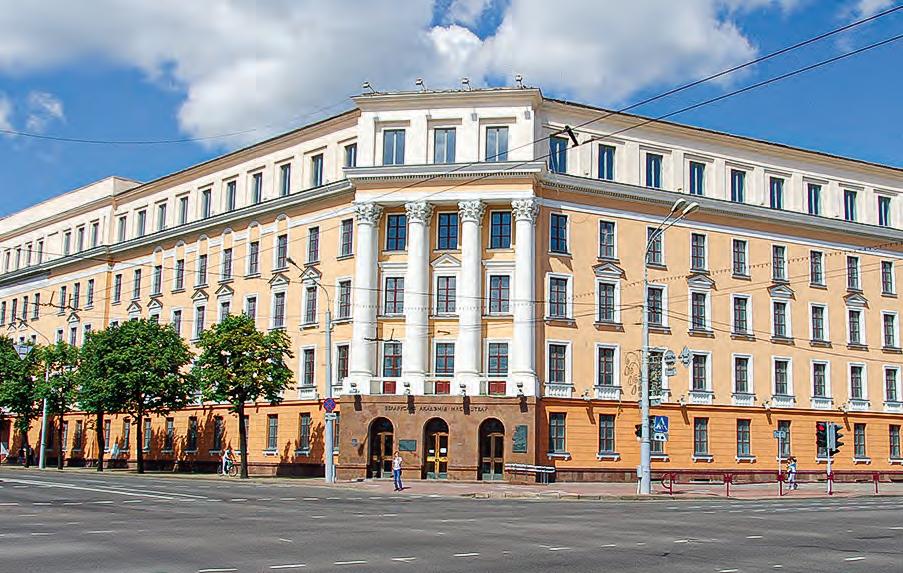
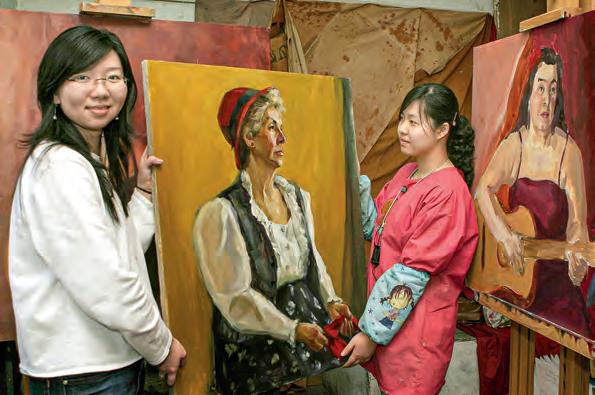
Belta
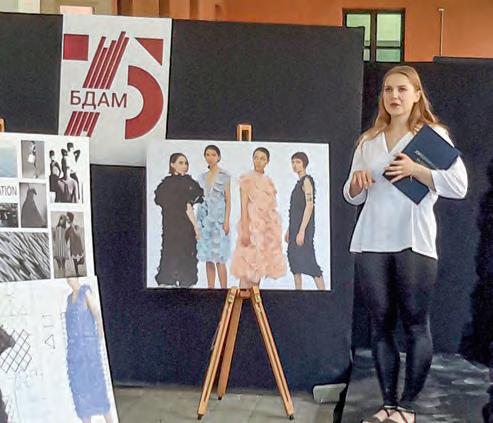
Russia, Serbia, Ukraine, the Czech Republic, Lithuania, Latvia, Venezuela, Iran, Syria, Lebanon, Kazakhstan, Japan, South Korea, the USA, Denmark, Austria, China, Germany, France, Greece, Norway and other countries have studied at the Academy over the past decade. In 2018, at the International Forum of Innovations in Industrial Design PUSHKA, the Belarusian State Academy of Arts was recognised as the best higher education institution of the year in the CIS. At the European Delphic and World Delphic Games in the categories of “Fine Art”, “Photography”, “Web Design”, “Clothing Design”, “Painting” BSAA students over the past 15 years received more than 20 awards, including 8 gold ones. The international Red Dot Design Award 2020 (the most prestigious European prize in the field of object design, awarded since 1955) was awarded to Igor Soloviev, lecturer at the Industrial Design Department of the Academy. The recognition of the Belarusian State Academy of Arts is evidenced by a number of other facts, including the participation of students, masters, postgraduates, faculty in important international cultural, scientific and educational events abroad. And, of course, awards of prestigious competitions and festivals, as well as permanent cooperation with diplomatic missions of the Republic of Belarus abroad in presentation of contemporary art of the country. For example, the exhibition “Belart.by. Young Artists of Belarus” was held at the State Museum of Contemporary History of Russia in Moscow as part of the Year of Culture of the Republic of Belarus in the Russian Federation. The exhibition
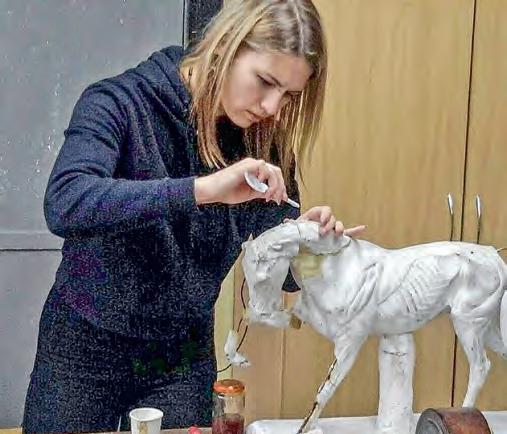

included a large-scale presentation of creative works made by teachers and students of the Academy of Arts. The students’ exhibition of photographic works “Movement of Light” was shown as part of the V International Photographic Competition “Volga Biennale-2012”. (Nizhny Novgorod), the art project “Illusion of Movement” was exhibited at the 6th International Tashkent Photo Biennale.
Since 2012, there has been students exchange between the BSAA and the University of the Arts from the Austrian city of Linz. Short-term internships were held for students of the Faculty of Design and Decorative and Applied Arts of the Academy at the Gzhel State Art and Industry Institute and for students of this Russian institution at the BSAA. In 2015–2018 the best students majoring in “restoration” of the art faculty had the opportunity to take training courses at the Warsaw Academy of Arts through the Polish National Commission for UNESCO.
There is no doubt that the BSAA forms long-term broad contacts with higher education institutions of art and culture, mainly in Europe. The Academy concluded its first international cooperation agreement with the Academy of Arts of German Munster in


1996. Today the BSAA has 60 valid agreements, memorandums and contracts with art and cultural institutions of higher education from other countries. In the past few years alone, agreements have been signed with the Russian State University for the Humanities in Moscow, A. Stieglitz St. Petersburg State Academy of Arts and Industry, VGIK and other universities.
Among the most significant exhibitions and projects of contemporary art displayed in the Academy’s exhibition halls are the exhibition of teachers of the Vilnius Academy of Arts “NezhNo” (2016), the exhibition “Song of Labour” as part of an Austrian-Belarusian project, the exhibition of teachers of the Faculty of Art of the University of Nikolay Kopernik from Torun (Poland) “In Terra” (2017). All of them
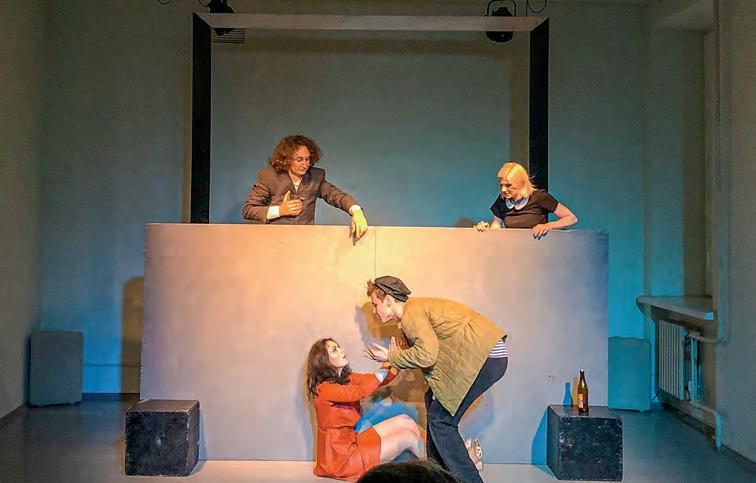
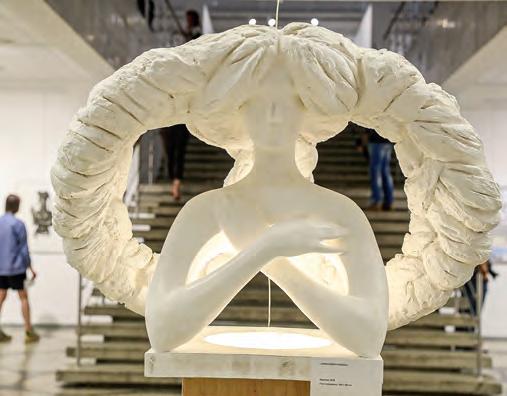

Belta were accompanied by the authors’ tours, lectures, master classes and contests.
It is necessary to mention the curatorial exhibition project “Messages” (Lithuania, 2015), which, according to press reports, has become the largest presentation of contemporary art in Lithuania in recent years; “City|Urbs” (Austria, 2015), which received the attention of the Austrian public; “On the way. In Search of the Alphabet” (Germany, 2015), highly appreciated by the professional German community, “Ode to Joy” (Austria, 2017), “To the Stars” (Poland, 2017), recognized by the young Polish creative community, “Augmented Reality” (Germany, 2018), the number of its viewers amounted to tens of thousands, exhibitions and projects in Croatia, Hungary, Russian Federation, Argentina, implemented with the support of the diplomatic missions of the Republic of Belarus abroad.
Fifteen years ago the Belarusian State Academy of Arts set up the “Alla prima” Student Centre for Contemporary Art. The SCCA considers its main goals to present current trends, the process of creating modern design using new artistic forms and means, to support progressive and experimental art traditions of academic education. In 2014, the creative team of students of the theatre faculty of the BSAA won the Grand Prix of the 6th International Youth Theatre Festival of graduation performances of creative universities “Aparta” (St. Petersburg, Russian Federation) for the performance “And If There is No Tomorrow”.
Significant events in the international, professional and artistic life of the Academy include participation in the “Time Ribbon” exhibition at the UN headquarters in Geneva. It was held last year in April in a large exhibition area which reflects not only the nature of the United Nations, but also a huge collection of art. — And we were honoured to make a large retrospective exhibition showing the work of teachers and students over the course of several decades, — says Mikhail Borozna, Rector of the Belarusian State Academy of Arts.— As a result, not only an academic school was presented there, but also the works that belong to contemporary art. They include media projects, animation and installations, posters and photographs, experimental works. This event has been, probably, the most significant in recent years. It allowed us to see retrospectives, the dynamics of many processes both in fine arts and design, and in the development of the creative philosophy itself, which is cultivated at the Academy. This is the event that demonstrates the recognition of our school.
Yes, today it is important not only to determine the general direction of art development in the country and find the most fruitful ways to move forward, but also to realize the dreams and ideas of creative young people, which is expected by society, said Mikhail Borozna, Rector of the Belarusian State Academy of Arts: — The path of our unique creative educational institution, I am not afraid to seem immodest in this respect, has been a logical continuation of its successful activity for 75 years. And this gives us hope for fruitful development of the Academy in the future. By Veniamin Mikheyev
hiGh educational StandardS
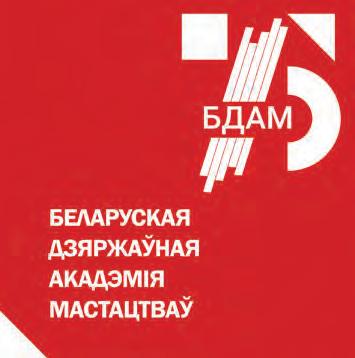
The Belarusian State Academy of Arts (BSAA), founded in 1945 and located in Minsk, is the only higher education institution of arts in the republic of Belarus preparing students for a career as an artist, an actor, a theatre, film and TV director, a designer, an art historian, etc.
Theatre Faculty: Acting (Drama Theatre and Film), Acting (Puppet Theatre), Acting (Musical Theatre), Direction (Drama Theatre), Direction (Musical Theatre), Direction (Puppet Theatre), Direction (Variety Theatre), Direction (the Circus), Art History (History and Theory of Theatre).
Period of study: 5 years (Acting — 4 years).
Faculty of Film, TV and Animation (Screen Arts): Cinematography (Film Camerawork), Cinematography (TV Camerawork). Film and TV Direction (Film): Feature film Documentary, Animation, Film and TV Direction (TV), Film and TV Direction (Sound Direction), Art History (TV and Film Studies), Art History (TV and Film Production Management), Art History (Screenwriting).
Period of study: 4 years (in Art History areas — 5 years).
Art Faculty: Painting (Easel Painting), Painting (Theatrical Scenic Painting), Painting (Film Set Painting), Monumental and Decorative Art (Painting), Monumental and Decorative Art (restoration), Sculpture, Graphics, Art History (Fine Arts).
Period of study: 6 years (Art History — 5 years).
Faculty of Design and Decorative and Applied Arts: Three-Dimensional Design: Means of Production and Vehicle Design, Consumer Products Design, Furniture Design, objects and Spaces Design: Exposition Design, interior Design. Graphic Design: Photographics, Communication Design: TV Advertising. Multimedia Design. Decorative and Applied Arts (Ceramics), Decorative and Applied Arts (Textiles), Decorative and Applied Arts (Costume Design), Decorative and Applied Arts (Glassware), Decorative and Applied Arts (Metalwork).
Period of study: 5 years. Both full-time and part-time forms of education are available in a number of specialities.
Faculty of Further Training and retraining. This offers individual and group internships, further training and retraining courses in various specialities.
Master’s Degree Course offers programmes in Art History: History and Theory of Theatre, History and Theory of Arts, Film and TV Arts, Design.
Period of study: 1 academic year.
Postgraduate Course offers programmes in Art History: Theatre Art; Film, TV and other Screen Arts; Fine Arts, Decorative and Applied Arts and Architecture; Technical Aesthetics and Design.
Both full-time (3 years) and part-time (4 years) courses are available.
Doctoral Course offers full-time three-year programmes in Art History: Theatre Art; Film, TV and other Screen Arts; Fine Arts, Decorative and Applied Arts and Architecture.
The beginning of classes can vary depending on the faculty:
Preparatory Department — September 15
Theatre Faculty — September 1
Faculty of Film, TV and Animation (Screen Arts) — September 1
Art Faculty — october 1
Faculty of Design and Decorative and Applied Arts — october 1
Master’s Degree Course — September 1
Postgraduate Course — November 1.








